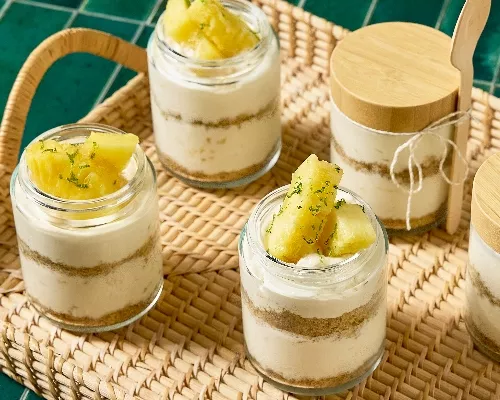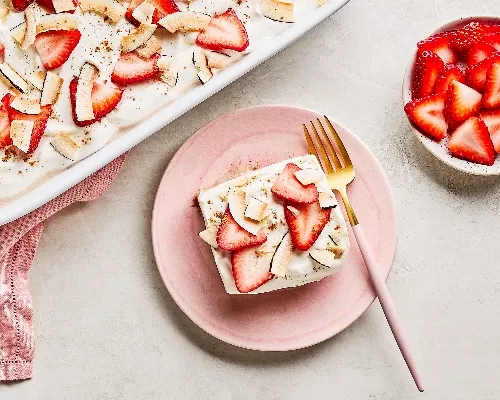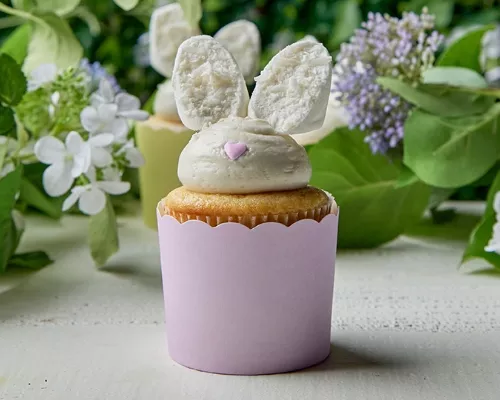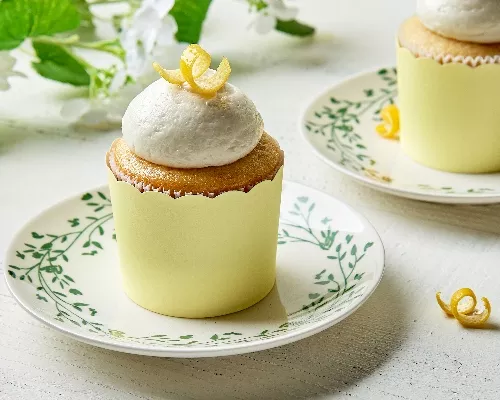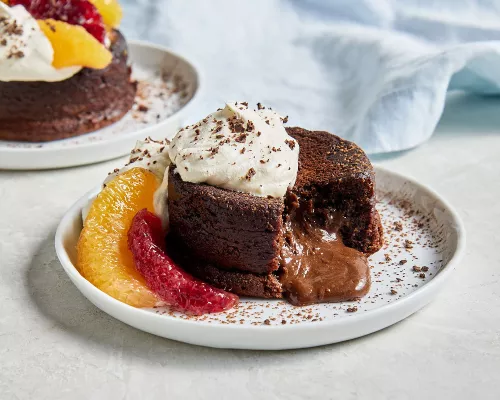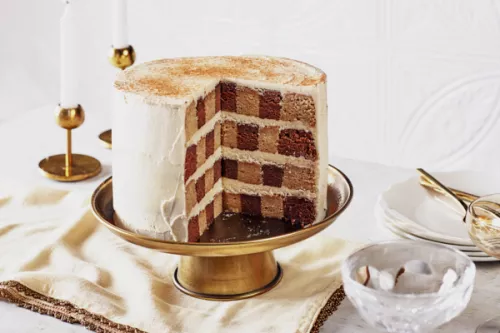Step 1
Preheat oven to 350℉ (180℃). Grease and line two 8 inch x 1.5 inch (20 x 3.6 centimetres) pans with a round of parchment. Flour pans and tap out any excess. Set aside.
Step 2
In a large bowl, whisk together flour, almond flour, baking powder, and salt. Set aside.
Step 3
In a measuring cup, whisk together ½ cup (120 ml) coconut milk with eggs, egg whites, and almond extract. Set aside until ready to use.
Step 4
In bowl of a stand mixer with the paddle attachment, cream the butter with coconut oil until creamy and thoroughly combined. Add the Redpath® Granulated Sugar and cream until mixture is very pale and fluffy; about 3 minutes.
Step 5
Add half of the dry ingredients, blending on low speed until flour is somewhat incorporated. Add the remaining flour mixture and blend on low until flour is absorbed into the butter mixture; about 1 minute. Pour in the 1/2 cup (120 ml) coconut milk. Cream mixture on medium speed for about 1 minutes. Add the egg mixture in thirds, blending until eggs are just incorporated before adding more. Once all the egg mixture has been added, mix batter until just blended; do not overmix.
Step 6
Divide the batter evenly between the two prepared pans, smoothing the tops with an offset spatula. Place cake pans into the preheated oven for 30 to 35 minutes or until a skewer comes out clean when inserted in the centre of each cake. The cake should also bounce back when gently pressed.
Step 7
Take out of oven and cool for 5 minutes in the pan. Unmold cakes and allow to cool completely on a wire rack before cutting and decorating.
Step 1
Sift Redpath® Icing Sugar into a large bowl to get rid of any lumps. Set aside.
Step 2
In the bowl of a stand mixer with the paddle attachment, cream together the room temperature coconut oil, butter and salt until creamy and smooth; about 3 minutes.
Step 3
Add Redpath® Icing Sugar, 1 cup at time and blend well after each addition. Start on low speed so that the sugar doesn’t come out of the bowl, and then increase the speed to high until buttercream is smooth and fluffy.
Step 4
Add almond and vanilla extracts, blending until fully incorporated. Beat in 1 tablespoon of coconut milk until well blended. If the buttercream isn’t soft enough, beat in the additional tablespoons of coconut milk. Use immediately, or cover with plastic wrap and store in the refrigerator until ready to use. Make sure buttercream comes to room temperature before using.
Step 1
If desired, marzipan may be tinted with gel food colouring. Place 1 or 2 drops of gel food colouring, using a toothpick. Knead until the colour is dispersed evenly throughout. Roll into a log, about 1.5 to 2 inches (3.8 to 5 centimetres) in diametre. Slice five ⅛ inch (3 millimetres) discs from the roll of marzipan.
Step 2
Lay discs in between 2 sheets of wax paper and with the rounded part of a spoon or finger, gently thin out the edges of the circles.
Step 3
Carefully peel petals off the paper and lay them down slightly overlapping one another. Start at one end (the petal that is on the bottom), roll into a thin tube, and continue to roll until all the petals are rolled. Carefully roll the middle of the tube between fingers to create an hourglass shape, this will produce two roses, one on top, and the other on the bottom. With a sharp knife or scissors, snip the marzipan close to the base of the flower. Carefully flare the petals to make the rose more realistic. Set aside, until ready to use.
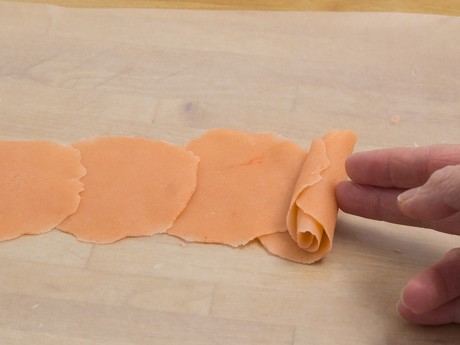
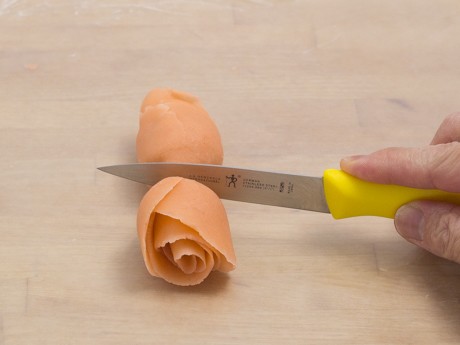
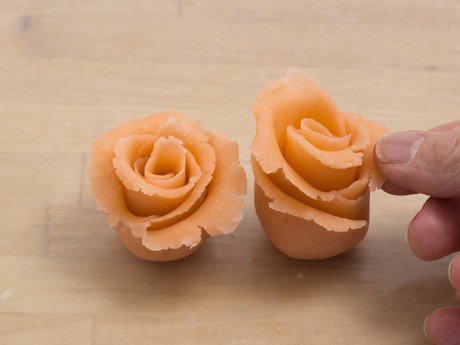
Step 4
Tint a small amount of marzipan with a drop or two of green gel food colouring. Roll the green marzipan between 2 sheets of wax paper to ⅛ inch (3 millimetres) thickness. With a sharp paring knife, cut out several leaf shapes. Score the leaves with the tip of the knife or skewer to resemble the veins of a leaf. To make the vines, roll a small amount of marzipan into a thin rope and wrap around a skinny dowel or a skewer, place onto a baking sheet. Set aside until ready to place on cake.
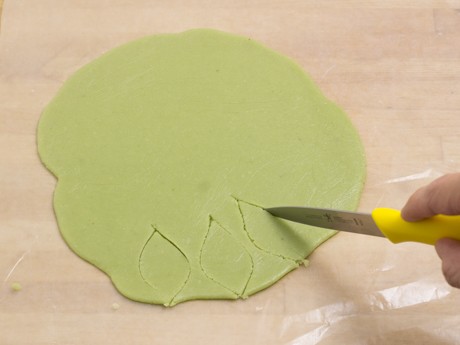
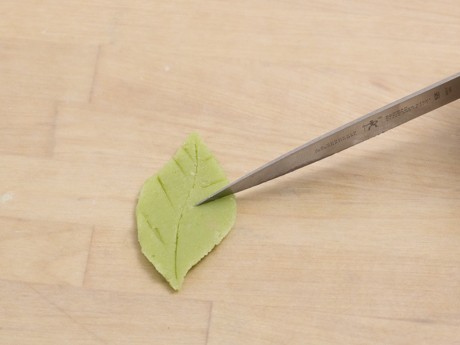
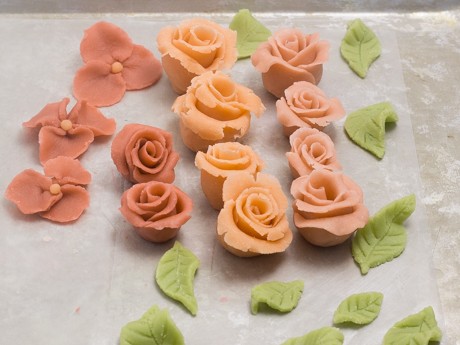
Step 1
With a sharp serrated knife, carefully slice off the rounded tops of the completely cooled cakes. If available, place cake onto a cake turntable. With the knife held parallel to the work surface, carefully and evenly divide the cake in half while turning the cake on the turntable. Repeat process with the second cake.
Step 2
Place one of the bottom layers onto the cake stand or platter. Transfer some of the buttercream into a piping bag fitted with a round tip. Pipe concentric circles onto the layer and with a small offset spatula, smooth the inner “circles” leaving the outermost ring untouched. Sprinkle a ¼ cup (15 g) of toasted coconut onto the smoothed out buttercream. Pipe a second ring of buttercream on top of the last circle.
Step 3
Place the matching top layer on the buttercream and repeat the process. However, for the third layer, place the top of the second cake onto the buttercream, leaving the flat surface of the bottom for the final layer. Pipe a final layer of buttercream onto the last layer. With an offset spatula, spread the buttercream until smooth. With a straight or offset spatula, spread a small amount of buttercream along the sides to seal in any gaps. Place cake into the fridge to allow buttercream to slightly harden; about 15 to 20 minutes.
Step 4
Decorate with the marzipan flowers, leaves, and vines.

*When tinting marzipan, it is always best to add the gel food colouring a drop at a time using a toothpick. Lighter colours look more realistic than supersaturated colours.
*Cakes can be made a few days ahead, cooled completely, and double-wrapped in plastic wrap. Wrap with foil before placing in freezer. Make sure to thaw overnight in the fridge the day before assembling.



